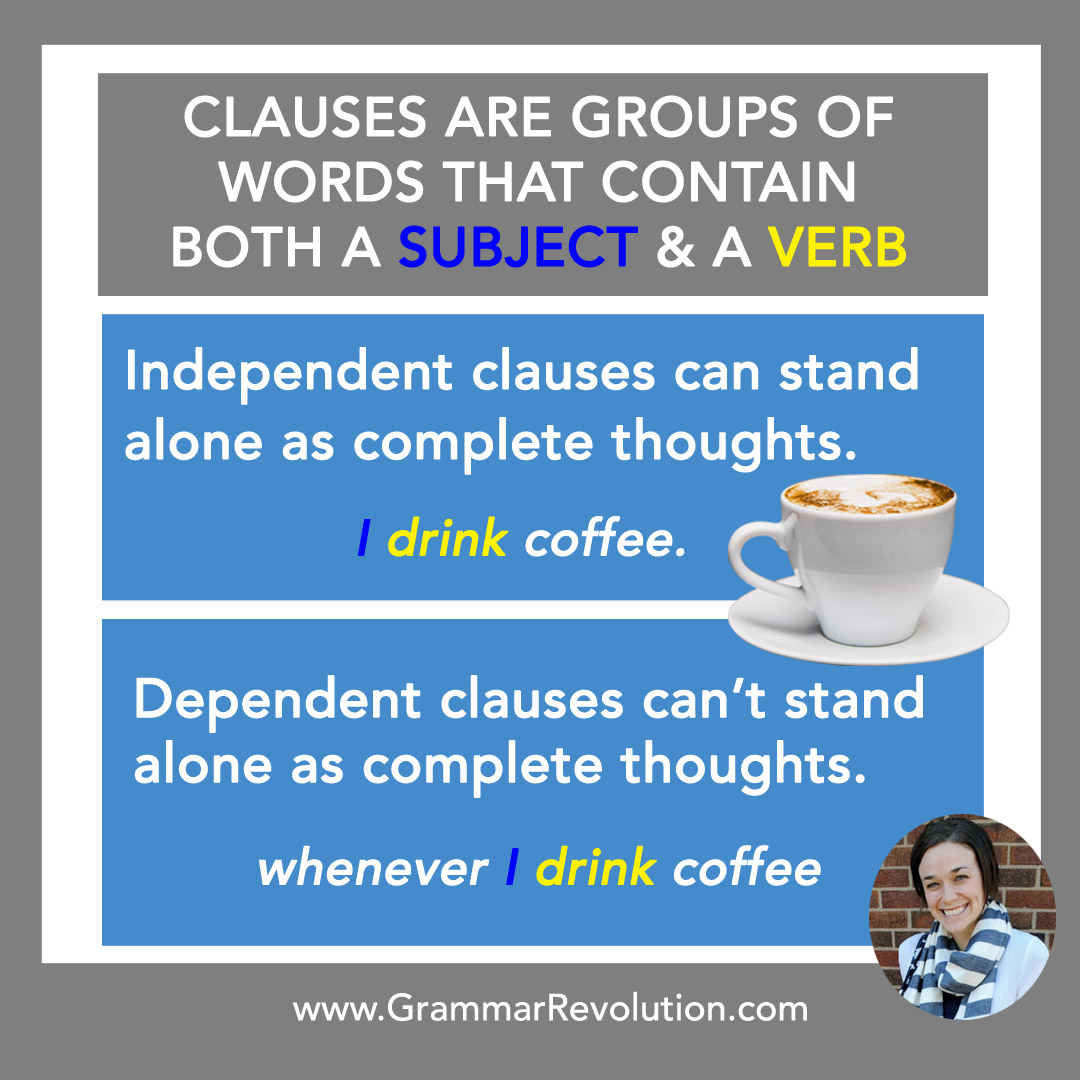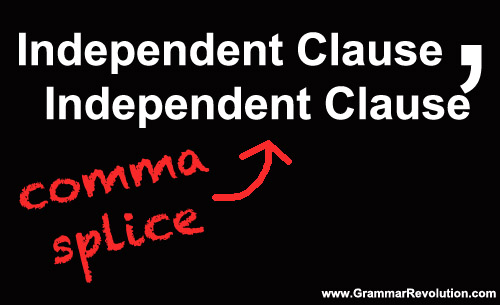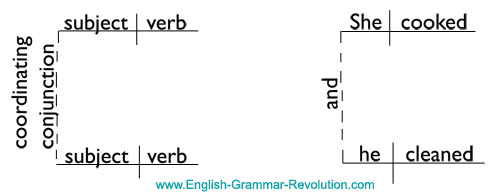
A compound sentence is made up of at least two independent clauses and no dependent clauses. In the diagram below, notice that there are two horizontal lines connected with a dotted, vertical line. These horizontal lines represent clauses.

Do you remember what independent clauses are? They're groups of words with a subject and a verb, and they can stand alone as complete thoughts.

When we take two or more independent clauses and join them together, we form a compound sentence. We usually connect the clauses with a comma and a coordinating conjunction, but you can also join them with a semicolon.
The ducks quacked, and the chicks peeped.
The ducks quacked; the chicks peeped.
Did you notice how the sentences above express two main ideas? The word compound means that something is made up of two or more elements, so it makes sense that these sentences express two or more main ideas.
Here is a sentence expressing three main ideas:
The ducks quacked, the chicks peeped, and the farmer smiled.
Notice that there are three independent clauses in that example.
The ducks quacked. The chicks peeped. The farmer smiled.
They could all stand alone if they wanted to, but they have decided to come together as one sentence.
Aw. isn't that sweet?
When we connect the independent clauses in a compound sentence with a comma, we also have to use a coordinating conjunction.
I kicked the ball, and it hit Tom.
Quick Refresher
• Coordinating conjunctions join sentence elements that are the same (two or more independent clauses, two or more phrases, or two or more words).
• There are seven of them (for, and, nor, but, or, yet, so).
When we try connecting the clauses with just a comma, it's a mistake called a comma splice. Avoid comma splices. If you don't want to use a coordinating conjunction, you can connect the clauses with a semicolon instead.
I kicked the ball, it hit Tom. --> No (This is a comma splice.)
I kicked the ball; it hit Tom. --> Yes
I kicked the ball, and it hit Tom. --> Yes

It's important to note that just because a sentence has a coordinating conjunction doesn't mean that it's compound.
Remember that a compound sentence connects two or more independent clauses. Sometimes, we use coordinating conjunction to connect other elements in the sentence. Here are a couple of examples. I'll make the coordinating conjunctions bold.
Cathy and Dan visited us on Thanksgiving.
We ate turkey and played games.
Both of those sentences contain compound elements, but neither of them is compound. The first sentence contains a compound subject (Cathy, Dan), and the second sentence contains a compound predicate (ate turkey, played games).
The structure of both of those sentences would be categorized as simple, not compound, because they still only contain one independent clause.
Sentence diagrams will help you to see that these sentences are made up of two or more independent clauses. They make the definition visual.
Notice that there are two horizontal lines (clauses) connected with a vertical, dotted line that holds the coordinating conjunction.

She cooked, and he cleaned.
If you'd like to teach or learn grammar the easy way—with sentence diagrams—check out our Get Smart Grammar Program.
It starts from the very beginning and teaches you grammar and sentence diagramming in easy, bite-size lessons.